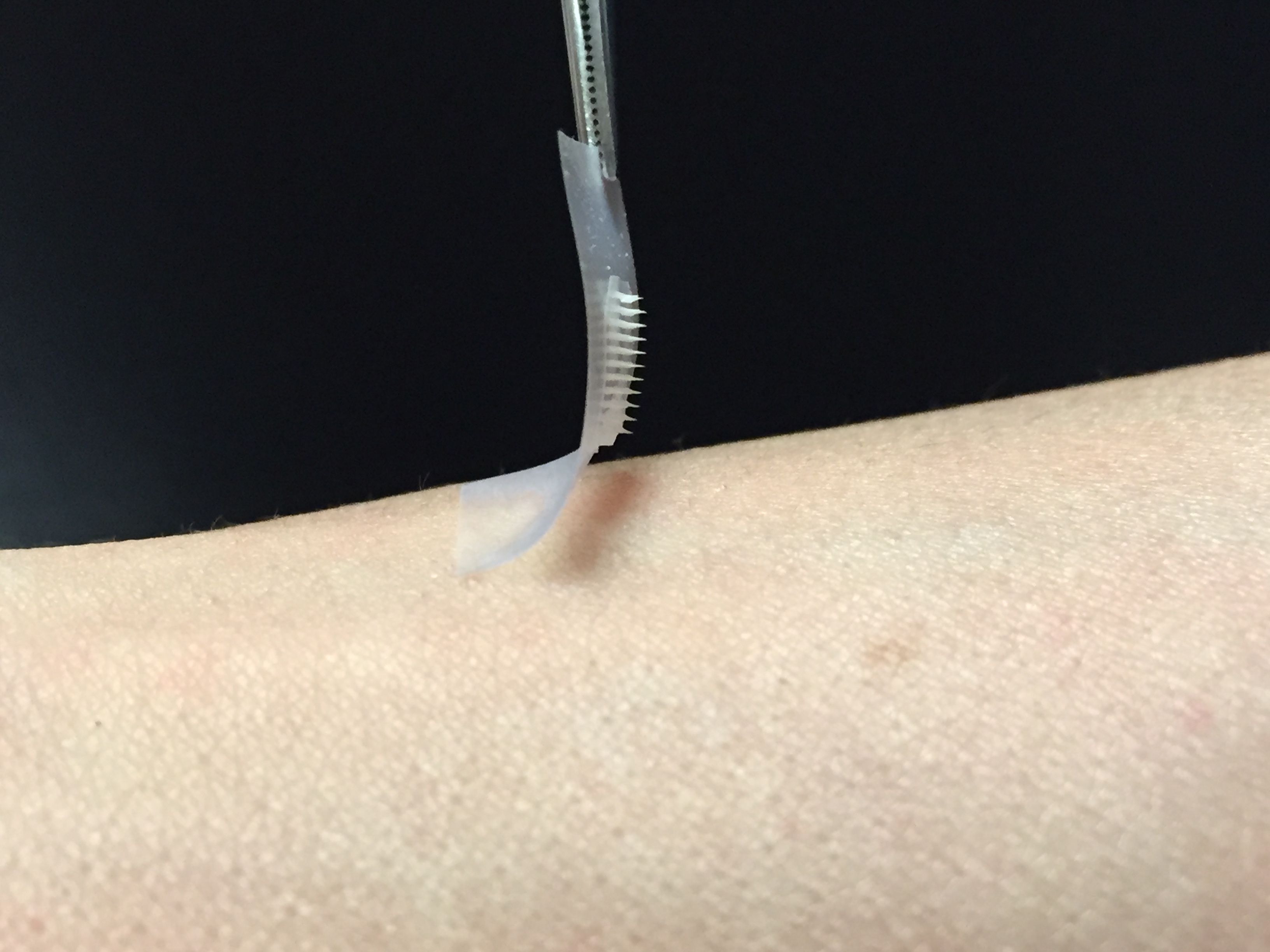- Safety & Recalls
- Regulatory Updates
- Drug Coverage
- COPD
- Cardiovascular
- Obstetrics-Gynecology & Women's Health
- Ophthalmology
- Clinical Pharmacology
- Pediatrics
- Urology
- Pharmacy
- Idiopathic Pulmonary Fibrosis
- Diabetes and Endocrinology
- Allergy, Immunology, and ENT
- Musculoskeletal/Rheumatology
- Respiratory
- Psychiatry and Behavioral Health
- Dermatology
- Oncology
"Smart" patch may eliminate need for insulin shots in diabetics
A new, painless “smart insulin patch” lowered blood glucose in a mouse model of type 1 diabetes for up to 9 hours, according to a study published in the Proceedings of the National Academy of Sciences.

The smart insulin patch could be placed anywhere on the body to detect increases in blood sugar and then secrete doses of insulin when needed. FormularyWatch/Source: Zhen Gu, PhD
A new, painless “smart insulin patch” lowered blood glucose in a mouse model of type 1 diabetes for up to 9 hours, according to a study published in the Proceedings of the National Academy of Sciences.
Related:FDA: Diabetes drugs don’t need death warning
Researchers at the University of North Carolina and NC State have created the first smart insulin patch, the size of a penny, which can sense increases in blood sugar levels and secrete doses of insulin into the bloodstream whenever needed.
“The patch is microneedle-based, loaded with insulin vesicles, which can release insulin once blood sugar becomes higher,” said co-senior author Zhen Gu, PhD, a professor in the Joint UNC/NC State Department of Biomedical Engineering. “It is has a smart-controlled release design; painless ease of administration; and bicompatible formulation.”
Related:Report: Diabetes drives traditional drug trend, specialty trend increases 20%
Using the smart patch may help diabetic patients eliminate regular finger pricks and repeated insulin shots. The insulin patch system can be made even smarter by personalizing it to account for a diabetic’s weight and sensitivity to insulin, according to the researchers.
“Injecting the wrong amount of medication can lead to significant complications like blindness and limb amputations, or even more disastrous consequences such as diabetic comas and death,” said John Buse, MD, PhD, co-senior author of the PNAS paper and the director of the UNC Diabetes Care Center, in a press release.
Gu and colleagues tested the ability of this approach to control blood sugar levels in a mouse model of type 1 diabetes. They gave 1 set of mice a standard injection of insulin and measured the blood glucose levels, which dropped down to normal but then they quickly climbed back into the hyperglycemic range. In contrast, when the researchers treated another set of mice with the microneedle patch, they saw that blood glucose levels were brought under control within 30 minutes and stayed that way for several hours.

Gu
In addition, the researchers found that they could tune the patch to alter blood glucose levels only within a certain range by varying the dose of enzyme contained within each of the microneedles. They also found that the patch did not pose the hazards that insulin injections do. Injections can send blood sugar plummeting to dangerously low levels when administered too frequently.
More pre-clinical tests and subsequent clinical trials in humans will be required before the patch can be administered to patients with type 1 and advanced type 2 diabetes.

Dr Buse
Because mice are less sensitive to insulin than humans, the researchers believe that the blood sugar-stabilizing effects of the patch could last even longer when given to actual patients. Their eventual goal, Gu said, is to develop a smart insulin patch that patients would only have to change every few days.
Payers Recognize the Benefits, but Still See Weight Loss Drugs through a Cost Lens
April 12th 2024Jeffrey Casberg, M.S., R.Ph., a senior vice president of clinical pharmacy at IPD Analytics LLC, a drug intelligence firm that advises payers and pharmaceutical companies, talks about how payers are thinking about weight-loss drugs.
